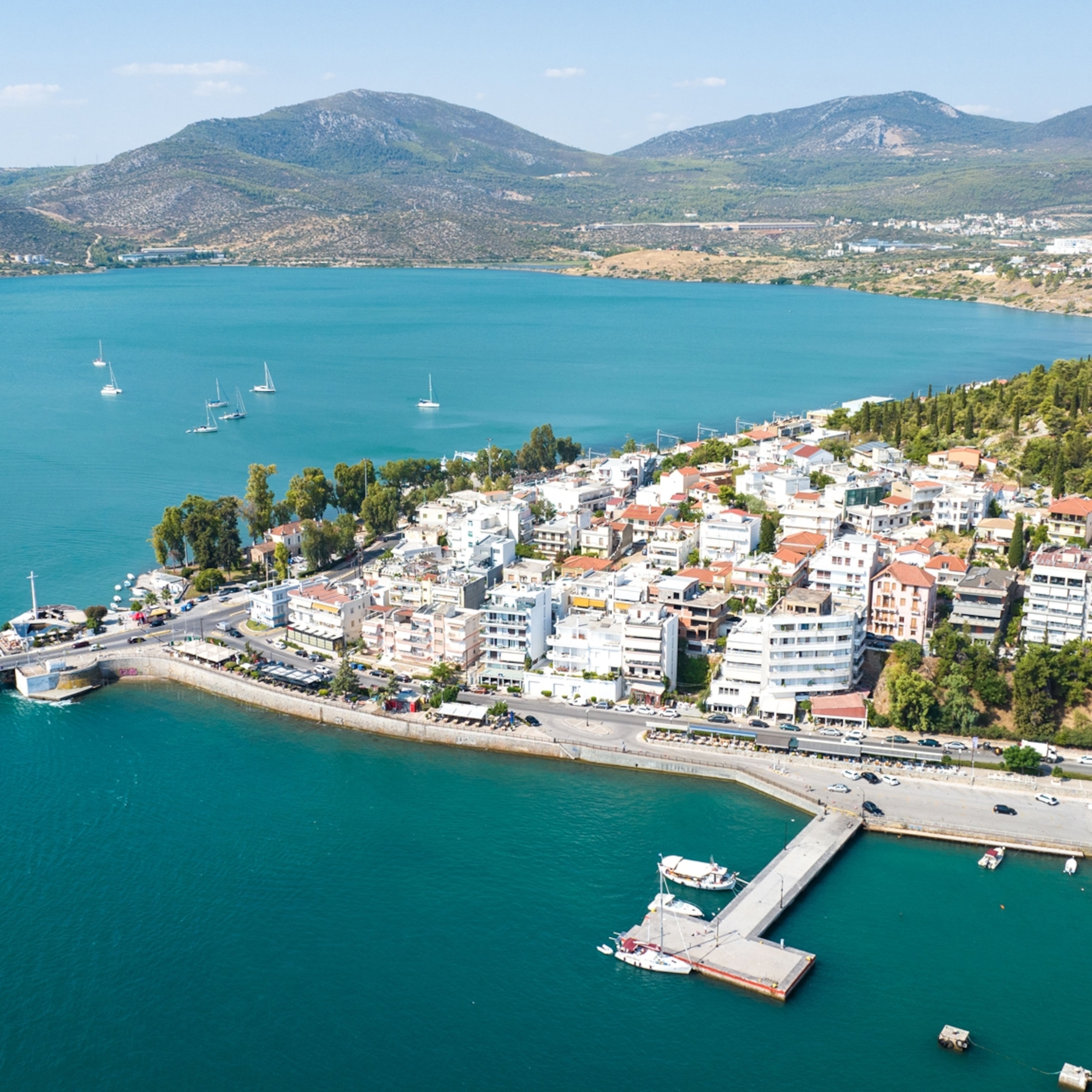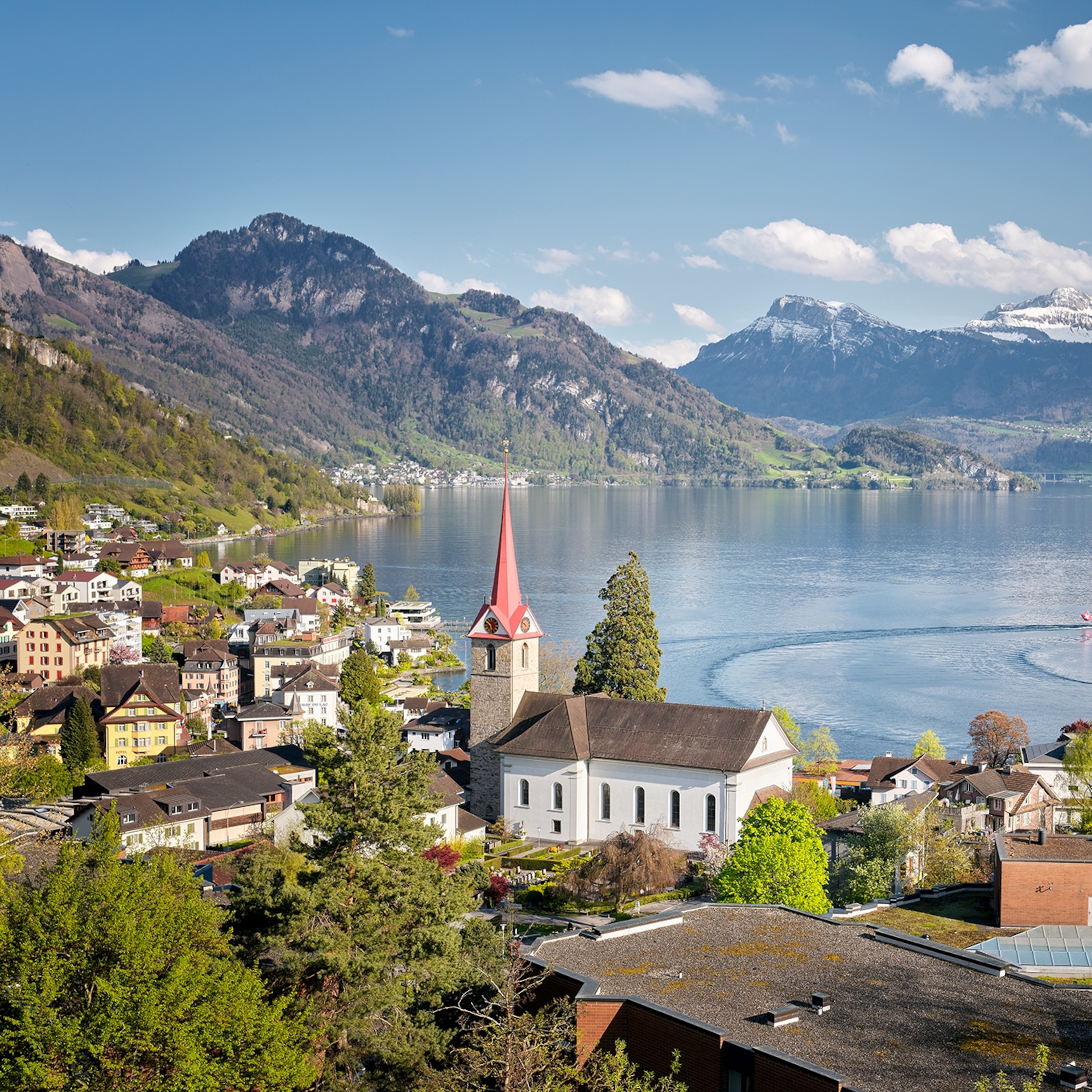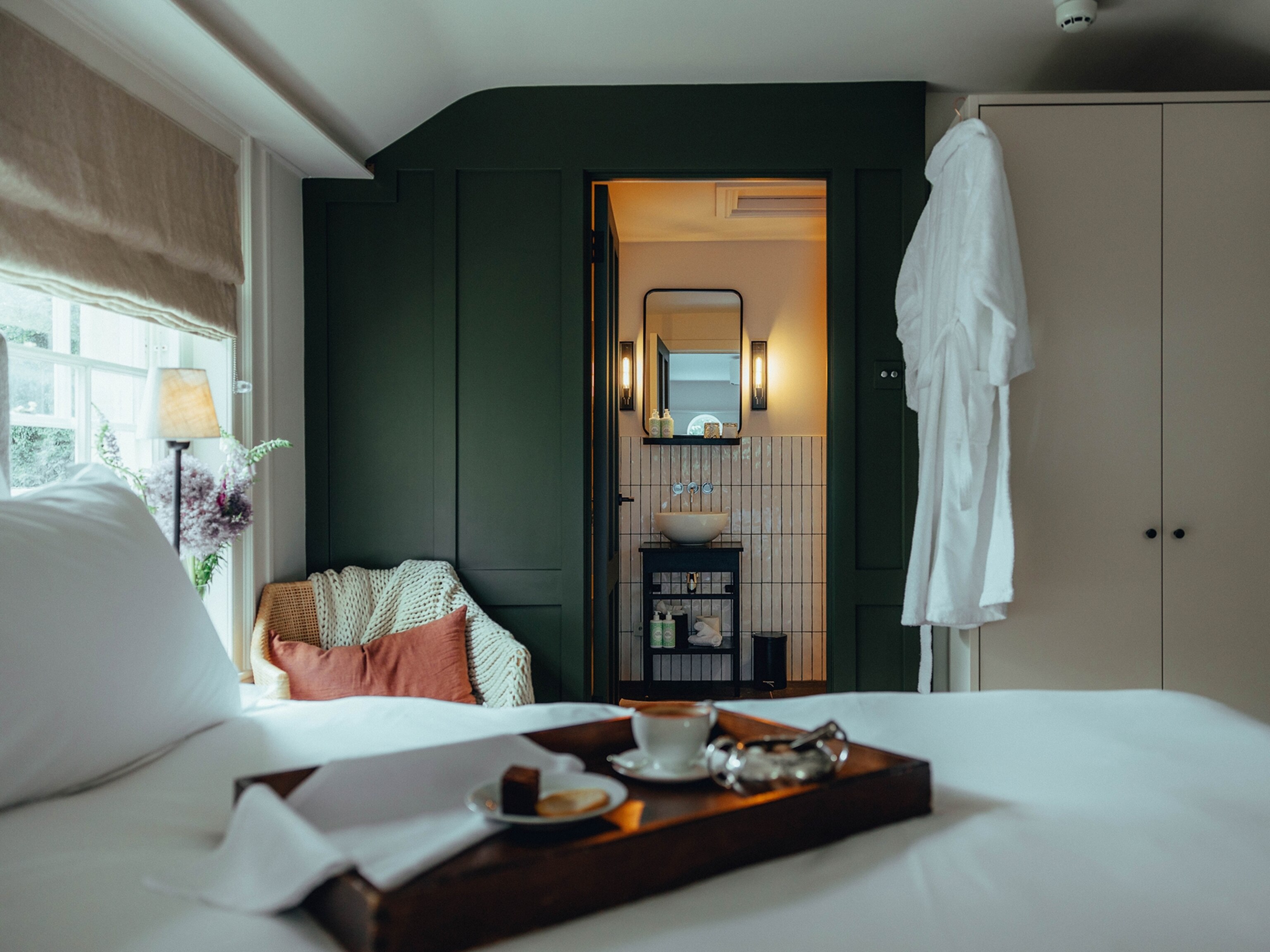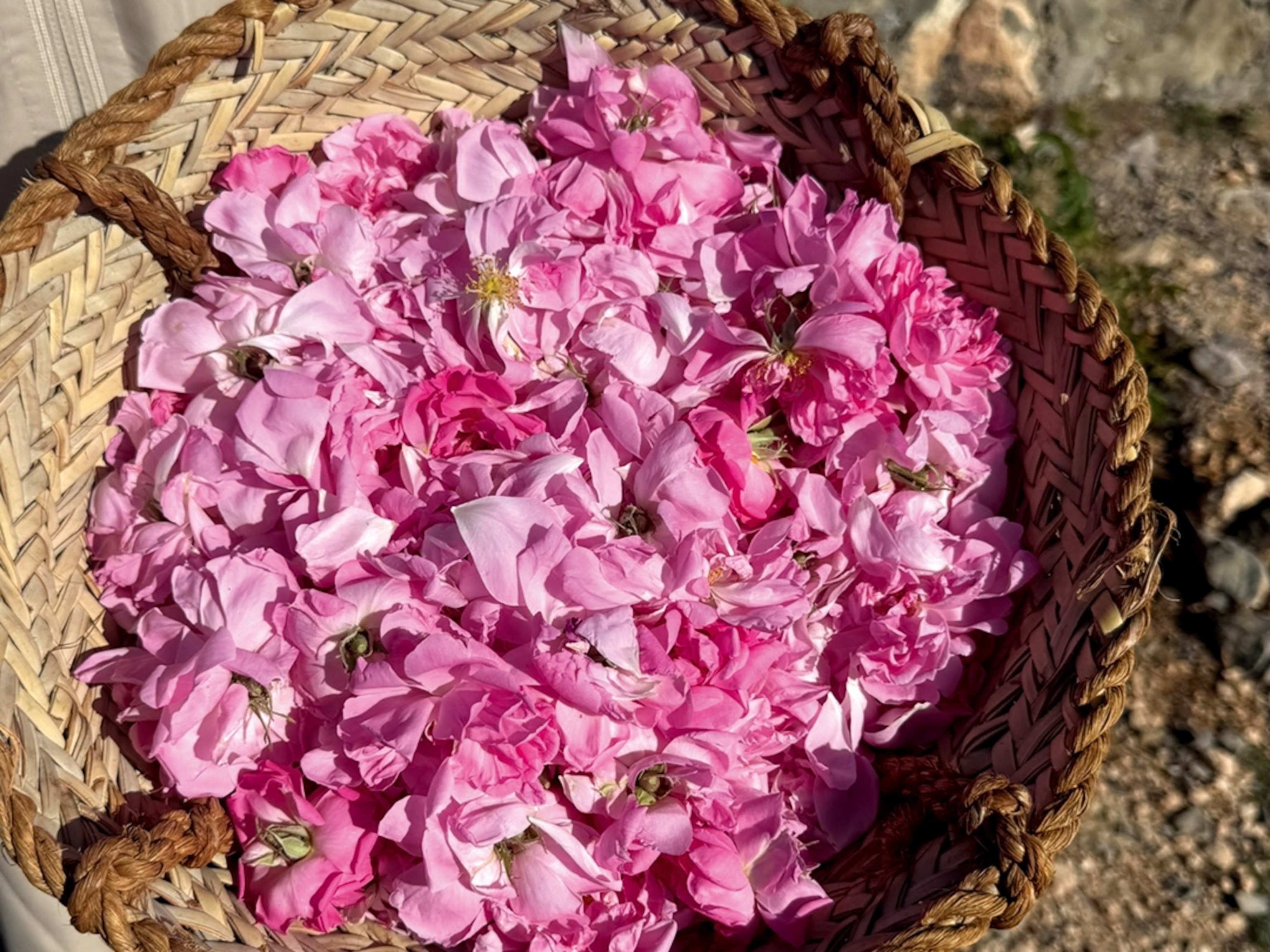
Purple Drinks and Chicken Spas: A Spicy Thai Homestay
This charming village in eastern Thailand is bursting with flavor.
A gray-haired woman with betel nut–stained teeth lowers a round bamboo chicken basket over me. A hole on top lets my head emerge. The rest of me is enclosed, sitting on a tiny wood stool, naked but for the striped sarong knotted around my waist. Hot air from the herb-filled rice cooker beside me is starting to sear my bare skin.
“Feel your breathing go in and out,” advises the woman, Sam Nao. “And think about everything.”
Traditionally, these wide baskets house roosters. But here, in a small village near the Cambodian border in eastern Thailand, it’s more popularly used as a spa.
When I emerge 15 minutes later, despite all the sweat, I feel fully refreshed and–owing to the herbs–smelling like delicious Thai food.
On my two-week trip around Thailand, I’m staying in “homestays,” simple family-run lodging, and Huai Raeng village might not be for everyone, but for me it’s the most revealing and rewarding yet.
The scenery becomes greener and hillier as we travel farther south on the four-hour drive from Bangkok. We pull onto a side road, and a pickup truck stops in front of us. “Thai cowboy?” I ask my SiamRise Travel guides, Good and Faiy. Out jumps a woman in a gold T-shirt and conical bamboo hat. “No,” Good says. “Thai cowgirl.”
This is Jam, my host for the next three nights.
Jam leads us onto tiny roads past the cavernous shade of rubber trees. She turns through a pineapple farm. The road bends, then reaches her place: a house on stilts, most of it fully open to catch the merciful breeze. Behind are woods and a fish-filled pond.
Jam’s mother, nicknamed Singto (the Thai word for “lion”) because of the amount she eats, greets me with flowers atop the steps. There are a couple of benches overlooking the pond; otherwise the second-story living area is wide-open. To one side is a bathroom and kitchen area; in back are two basic rooms (mine has a fan, two windows, and a half-inch mat to sleep on—simple but clean and atmospheric). Then, past the Buddha shrine, sits a small color TV on a short wood stool. No furniture, just hardwood floors. No walls either. When it rains, they just pull tarps down.
Jam quickly prepares a purple iced drink made of butterfly pea flower petals and lime, freshly picked from her garden. We sit and chat. Our introductions transition seamlessly into an array of conversations—from how King Rama V saved Siam from being annexed by France to how Jam learns English (reading through the dictionary and memorizing words).
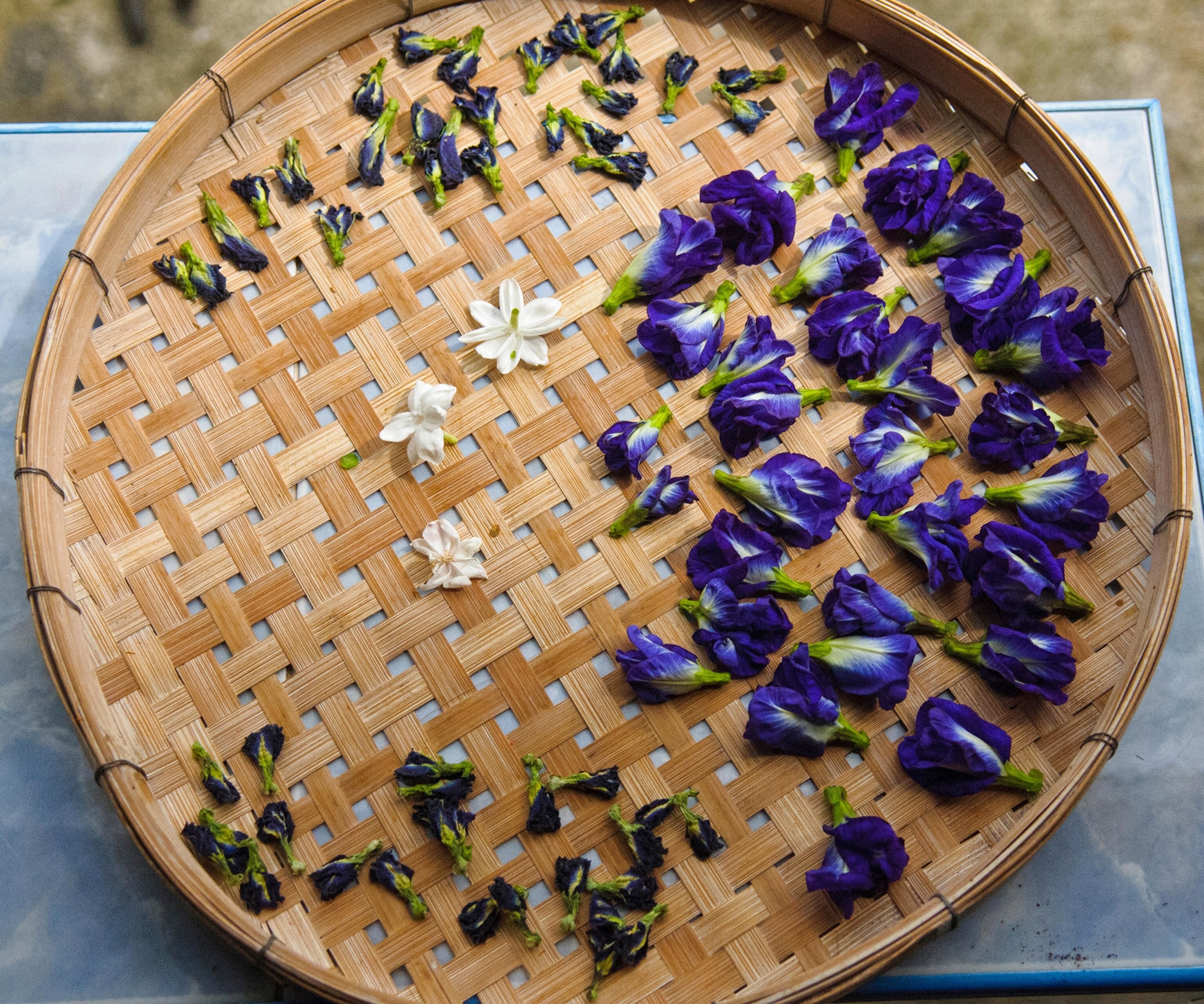
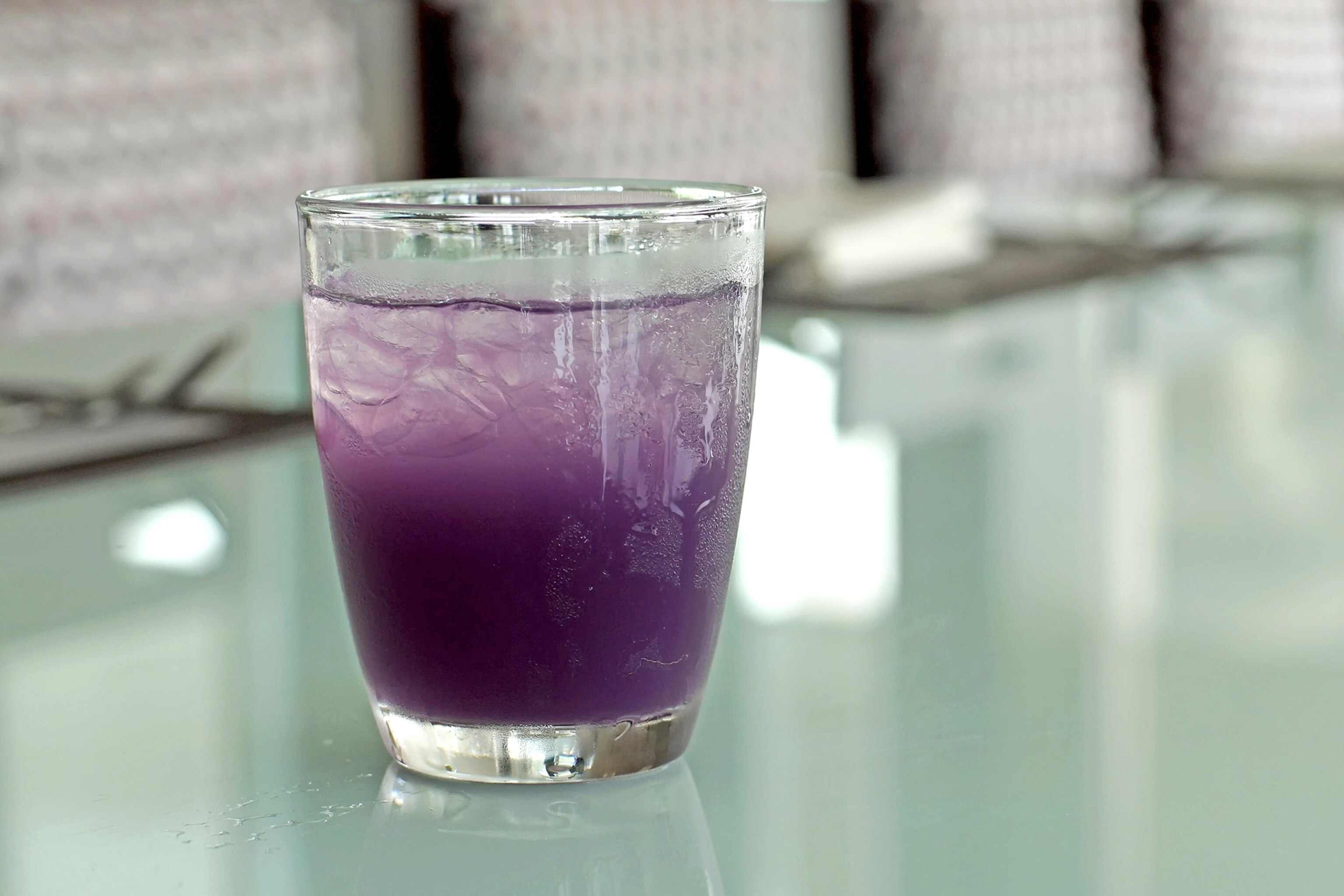
For dinner we have excellent noodles with fresh crab, shrimp paste, and rice served family style. We take turns pulling tasty meat off the lightly battered fish with our fingers. Then we lay on the floor in front of the TV to watch The Price Is Right Thailand and novelty acts on glitzy shows. There is a lot of laughter, particularly from Singto, who stays up watching after the rest of us go to bed.
This is fun.
Over the next few days, we explore local life, usually breaking for a nap when the heat peaks in the afternoon. The first morning, we wake at 5 a.m. to visit the market in nearby Trat and return after dawn with an enviable haul of mango, shrimp, chilies, whole fish, dried fish, and mushrooms. Later we pop by an astrologer’s home, where a woman stirs from a wooden bed to read my palms and a leaf I pick from her garden. She tells me I confuse easily (true), have problems settling down in one place (true), and have three excellent sources for income (I ask where I can find them).
Most of the action centers on food—and it’s easily the best Thai food I’ve had. Noi, a comical gem trader turned farmer from Bangkok, suddenly appears on his scooter to cook us all breakfast. “I have 18 hens. I will show you how to fry an egg,” he explains dryly. Later he makes us a delicious curry, with santan leaves, coconut sugar, tamarind, and river prawns. “Thai food is so good because it’s so natural and so varied. We cook quickly so it doesn’t lose its taste,” Noi says.
When I wake the next morning, I hear the sound of nuts being crushed in a bowl. Singto is preparing lunch already. Before noon, about a dozen young schoolkids come to see her prepare a traditional tasting lunch. The spread includes taro, fried anchovies, crushed peanuts, pineapple, and sweet egg served in little porcelain bowls, accompanied by fried rice with chili paste and a clear-broth fish soup. It is packed with flavor. Afterward she folds a portion of food into a betel leaf and makes it into a purse: a neat, portable lunch. The kids seem to enjoy seeing this as much as I do.
I often help with food preparations, whether it’s carving out coconut or stirring pots. One afternoon we make a Trat specialty, kanom chak, a snack made of riceberry powder, coconut, sugar, and coconut milk. It’s mixed, spread onto nipa palm leaves, and roasted. It looks like a chewy beef jerky and has a woodsy, sweet flavor.
To get the nipa palm leaves, we take a foraging boat tour in the Khlong Huai Raeng River canal. Banks are coated in the tangled green of palms and brush. We pause at a bridge to see the catch from a river prawn fisher. Our driver, Mr. Chu, ambles to the front of the long boat to cut down leaves, as a nearby cobra slithers out of sight.
This makes me glad to be in my seat, but shortly after, Chu invites me to plant a nipa root on the bank. I don’t particularly want to plant one at the moment, but because I always try to say yes when traveling, I do.
I hop to the front of the boat and boldly step onto the bank. “NOOOO!” I hear two voices call out from the boat as my left foot sinks into black, slimy mud. Guess I should’ve stayed on the boat.
When I pull my foot out, my shoe is caked in black, gooey mud. I quickly lean over and plant the nipa root in the mud.
- National Geographic Expeditions
We head back to the dock, arriving just as an afternoon rain starts falling. I lean over the covered dock to wash my shoe out in the river. Everyone’s laughing at this scene and taking photos. I’m laughing too.
A little mud never hurt anyone, I guess. But, I’ll admit, I hope that nipa root grows into the biggest palm tree in Trat province.
How to Do This Trip
Unless you speak Thai, it’s very hard to arrange a homestay and local activities on your own. SiamRise Travel and Local Alike book trips here, including meals, activities, and English-speaking guides to accompany you.
I stayed three nights and learned about making food, visited markets, got my horoscope read, experienced a chicken spa treatment (worth it!), met mangosteen soap makers, visited monks at a temple, and ate amazing Thai food.
You have access to a shared bathroom and shower with cold water, the fan-cooled room was comfortable after temperatures dropped in the evening, and no rain got into my room.
Also, don’t step into the mud.
